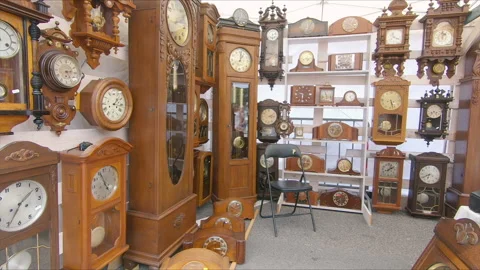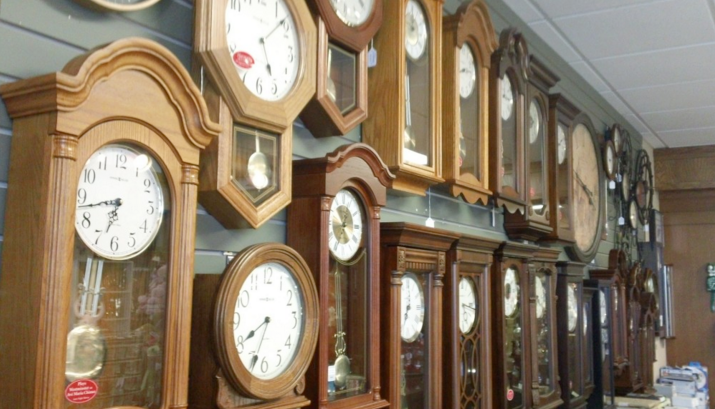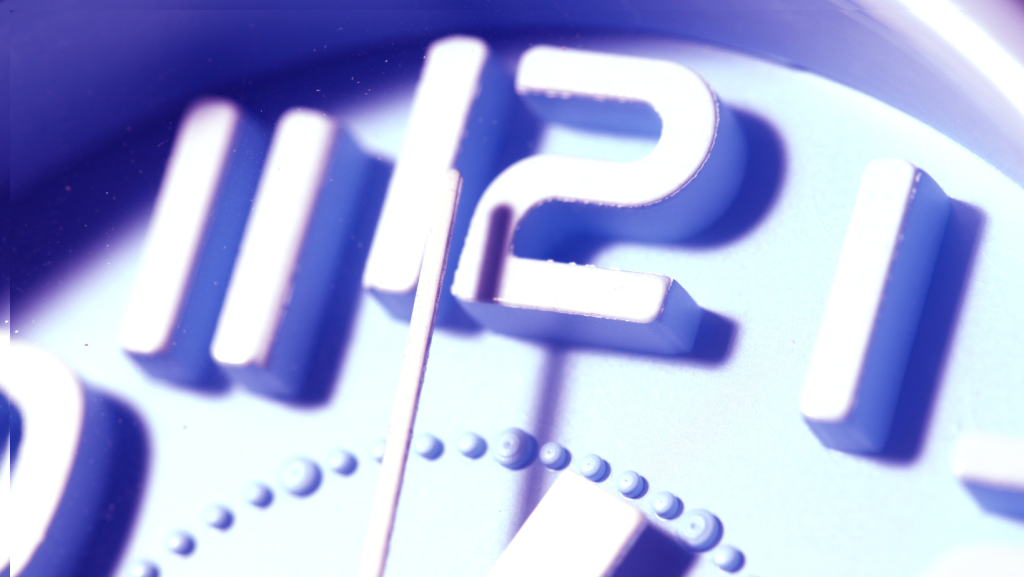Antique clocks are more than just functional timepieces—they are delicate works of art and history that deserve careful attention and preservation. Whether you’ve inherited a cherished family heirloom or found a vintage treasure at an antique shop, restoring and preserving your antique clock can ensure it remains a centerpiece in your home for years to come.
In this guide, we’ll walk you through the process of restoring an antique clock and share expert tips on how to preserve its beauty and functionality.
1. Assess the Clock’s Condition
Before diving into restoration, it’s important to assess the overall condition of your antique clock. This step involves checking both the exterior (the case, dial, and glass) and the internal mechanism. Take note of any visible damage, wear, or missing parts.
For more valuable or intricate clocks, consider consulting a professional clock restorer for an initial evaluation to determine the level of restoration required and whether specialized tools or techniques are needed.
2. Cleaning the Clock Case

Antique clock cases, whether made of wood, metal, or glass, require careful cleaning to avoid damage:
- Wooden Clocks: Dust the surface with a soft cloth, and use a mild wood cleaner or a mixture of water and vinegar to remove grime. Avoid harsh chemicals that could strip away the clock’s finish or damage the wood. For wooden cases with intricate carvings, use a soft brush to clean hard-to-reach areas.
- Metal Clocks: Use a soft cloth to wipe away dust. For tarnished metal, a gentle metal polish can be applied, but be cautious of over-polishing, which could wear away the original patina that adds to the clock’s value.
- Glass Panels: Clean the glass carefully with a glass cleaner, but avoid getting liquid on the dial or inside the clock. A microfiber cloth works well for a streak-free finish.
3. Repairing the Clock Mechanism
Restoring an antique clock’s mechanism is often the most complex part of the process. Here are some steps to guide you:
- Inspect the Movement: Open the back of the clock and examine the gears, springs, and pendulum. Look for dirt, dust, or rust that may be affecting the clock’s movement. Remove dust gently with a small brush or compressed air.
- Lubricate Moving Parts: Clocks need regular lubrication to function properly, but avoid using household oils. Instead, use clock oil or synthetic oils specifically designed for timepieces. Apply the oil sparingly to the pivot points of the gears.
- Check for Broken Parts: If gears, springs, or other mechanical parts are damaged, you may need to replace them. Sourcing original or replica parts can be difficult, so work with a reputable clock repair specialist or antique dealer who can help you find the correct components.
For intricate repairs, it’s advisable to take the clock to a professional clockmaker, especially if you are unfamiliar with clock mechanisms.
4. Restoring the Dial and Hands
The clock dial and hands are essential to the clock’s aesthetic and functionality:
- Dial Restoration: Over time, clock dials can fade or become tarnished. If the dial is metal, you can clean it gently with a mild cleaner, but for painted or paper dials, restoration should be handled by a specialist. Repainting or retouching a damaged dial is a delicate process that requires experience.
- Hand Repair: Bent or broken clock hands can be carefully straightened using tweezers or pliers. If the hands are beyond repair, you can replace them with period-appropriate replicas.
5. Maintaining the Clock’s Movement
Once the clock is restored, maintaining its movement is key to keeping it running smoothly:
- Wind Regularly: If your clock is mechanical, ensure you wind it regularly according to its specific needs. Some clocks need winding weekly, while others may require daily attention.
- Keep the Clock Level: Antique clocks, especially pendulum clocks, need to be placed on a level surface to function correctly. An uneven position can cause the clock to stop or run inaccurately.
- Avoid Overwinding: Be cautious not to overwind your clock, as this can damage the internal springs. Wind the clock just enough for it to function without resistance.
6. Protecting the Clock from Environmental Damage
Antique clocks are sensitive to environmental changes, and long-term exposure to adverse conditions can lead to irreversible damage. Here’s how to protect your clock:
- Avoid Direct Sunlight: Sunlight can fade wooden finishes, painted dials, and metal surfaces over time. Place your clock in a spot where it’s shielded from direct sunlight.
- Control Humidity: Clocks made of wood and metal can be negatively affected by humidity. Excessive moisture can cause wood to warp and metal to rust, while dry air can lead to cracking. Keeping your home at a moderate humidity level (around 40-50%) helps maintain your clock’s integrity.
- Keep Away from Heat Sources: Heat can cause wooden cases to dry out and split. Place your clock away from heat vents, radiators, or fireplaces.
7. Professional Restoration vs. DIY
Restoring an antique clock can be a rewarding DIY project, but it’s important to know your limits. Minor cleaning and maintenance tasks can be handled at home, but for significant repairs, especially involving the clock’s mechanism, it’s best to seek professional help. Working with a skilled clock repair specialist ensures that your clock will be restored without compromising its value.
Conclusion: Preserving Time and History
Restoring and preserving an antique clock is about more than just fixing its mechanical parts—it’s about preserving a piece of history. With the right care and attention, your clock can continue to mark the passage of time for generations to come. Whether you’re performing simple maintenance or undertaking a complete restoration, the result is a beautifully restored timepiece that holds both sentimental and historical value.




Downloaded the lucky97apk, and it runs really well on my phone. Easy to install and gets you straight into the game. Good stuff. Get it here: lucky97apk
Okkingapp looks like a fun way to spend my free time. Download here: okkingapp
Doch diese sucht Ihr in Online Casinos mit deutscher Lizenz derzeit
vergebens. Insbesondere Klassiker, wie Blackjack, Baccarat, diverse Poker und Video
Poker Varianten (als Bankhalterspiele) oder europäisches Roulette, sind hier zu nennen. Dabei
sind viele klassische Tischspiele nicht nur wesentlich näher am
“echten” Casino Erlebnis dran.
Wer rund um die deutsche Lizenz zu spielen beginnt,
muss leider damit rechnen, dass in Casinos mit DE Lizenz Zahlungswege wie Kreditkarten aus der Auswahl
gestrichen wurden. Anders sieht es in Casinos ohne deutsche Lizenz aus – hier
kannst du rund um die Uhr spannende Live-Dealer-Spiele von Top-Studios wie Evolution oder Lucky Streak spielen. In Casinos ohne deutsche Lizenz kannst
du ohne die strengen Auflagen des GlüStv spielen. Online Casinos ohne deutsche Lizenz – bei
uns findest du nur seriöse Casino Anbieter, bei denen du ohne Einschränkungen um Echtgeld spielen kannst.
Casinos ohne deutsche Regulierung haben insbesondere bei den Spielen deutlich mehr zu bieten als ihre in Deutschland lizenzierten Konkurrenten. Spieler können in vielen Online
Casinos ohne deutsche Lizenz legal spielen.
Dass auch Kryptowährungen eine Rolle spielen können in sogenannten Casinos ohne Lizenz, kann
zusätzlich positiv erwähnt werden. Die deutsche Gesetzgebung hat
so viele Nachteile, dass die deutschen Anbieter lediglich aufgrund der Seriosität punkten können. Ein solches wird niemals
mit einer deutschen Lizenz arbeiten können, das sieht die deutsche Gesetzgebung nicht vor.
References:
https://online-spielhallen.de/robocat-casino-bonus-code-maximale-gewinne-freischalten/